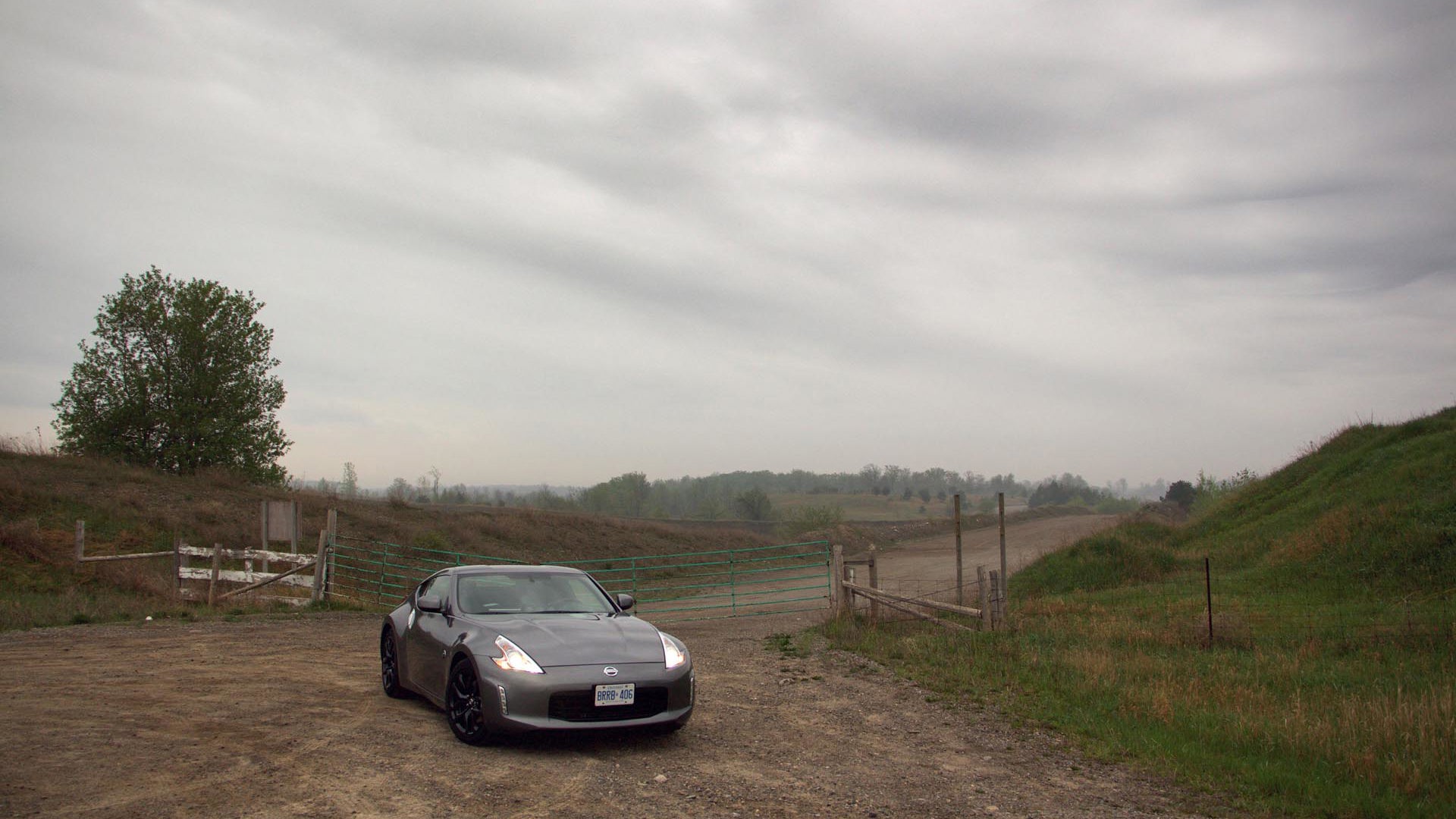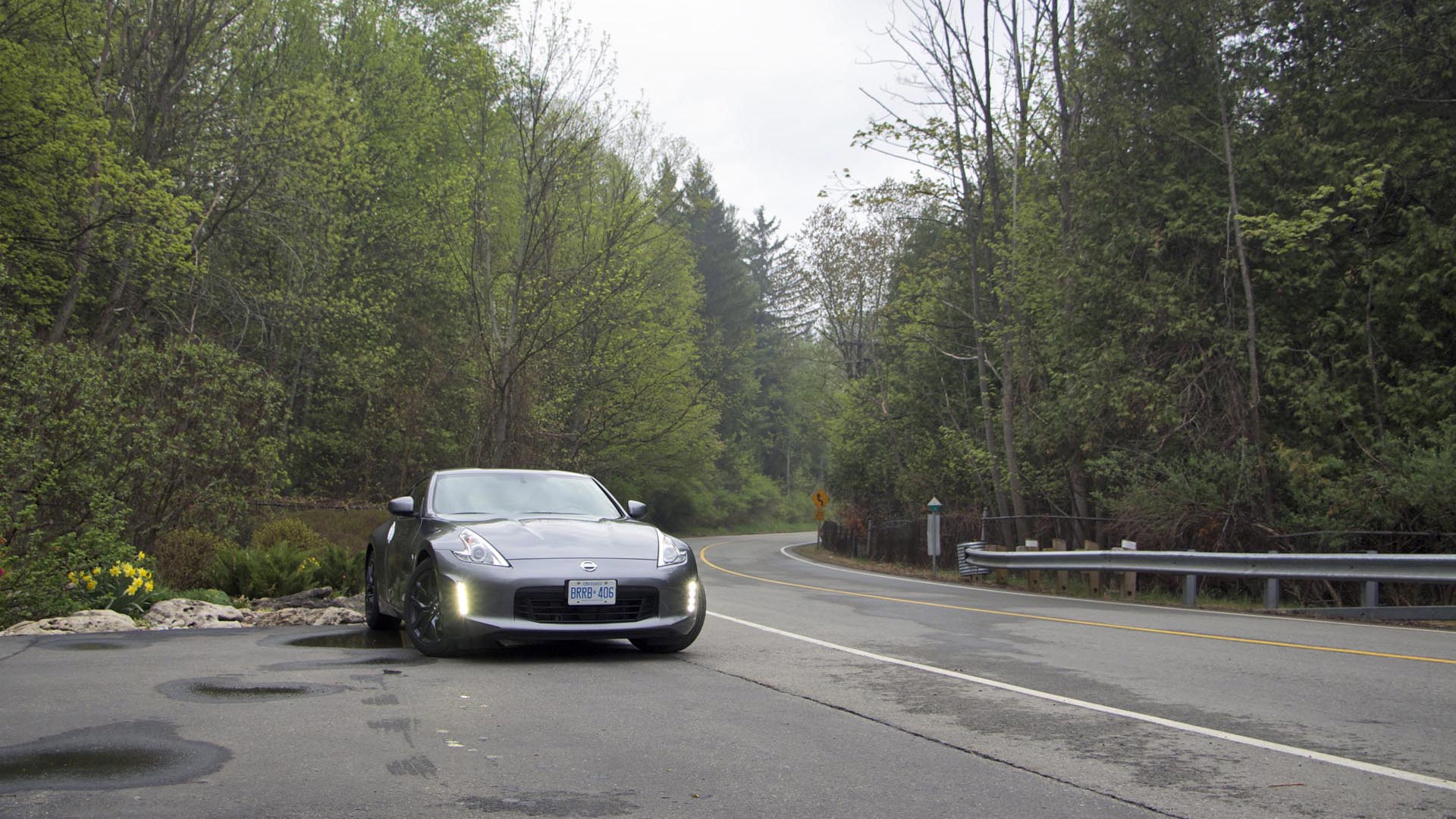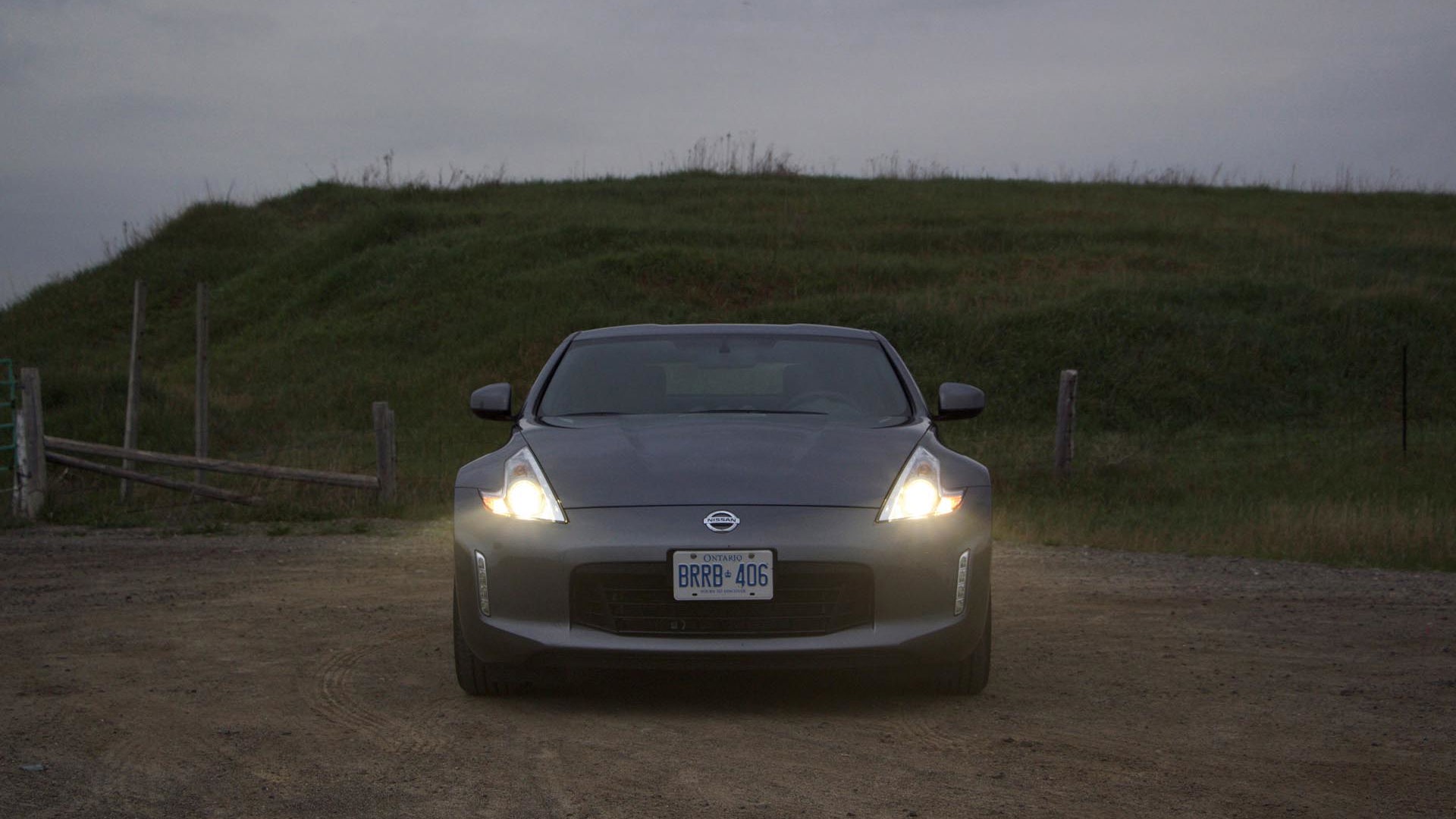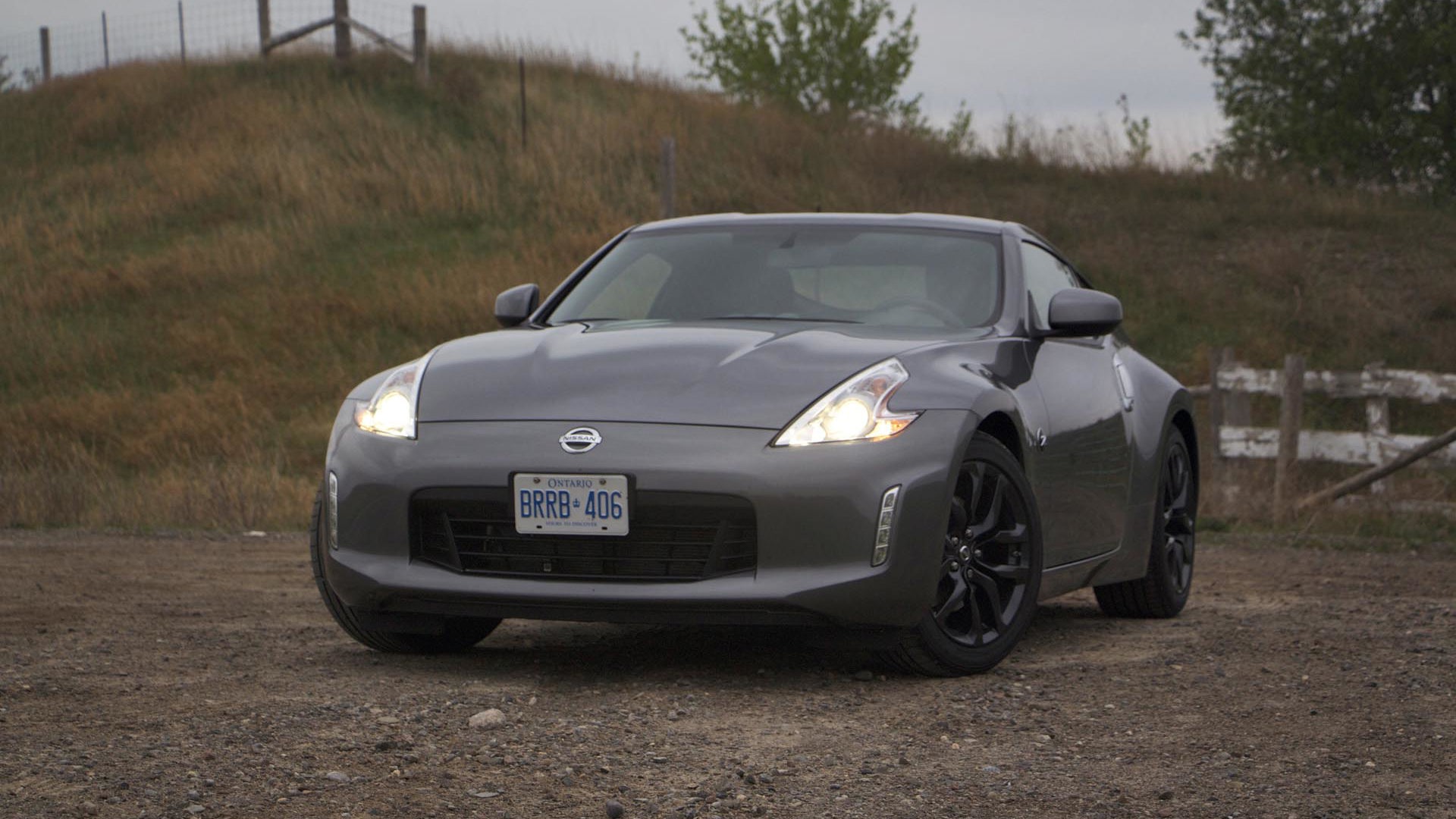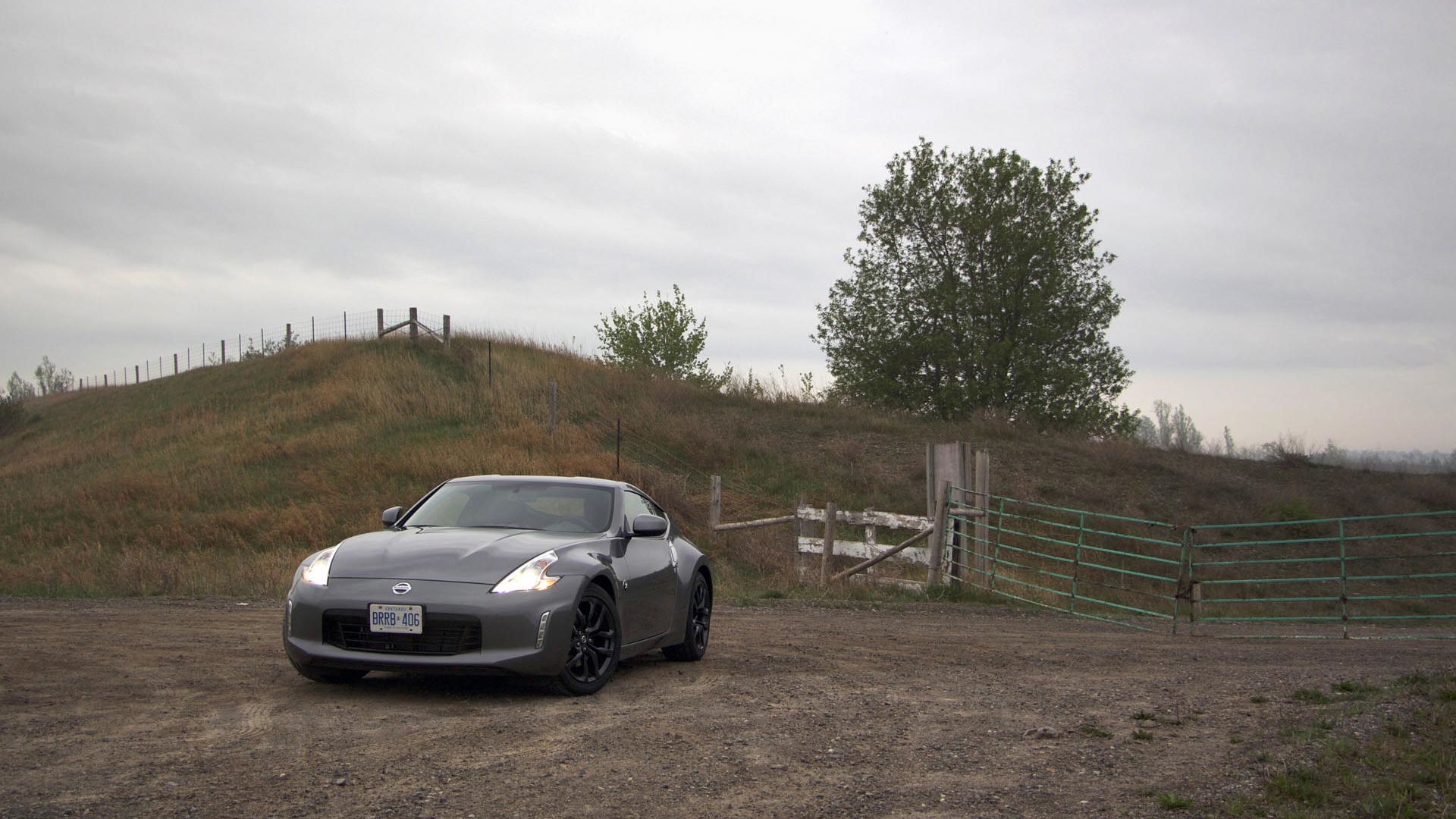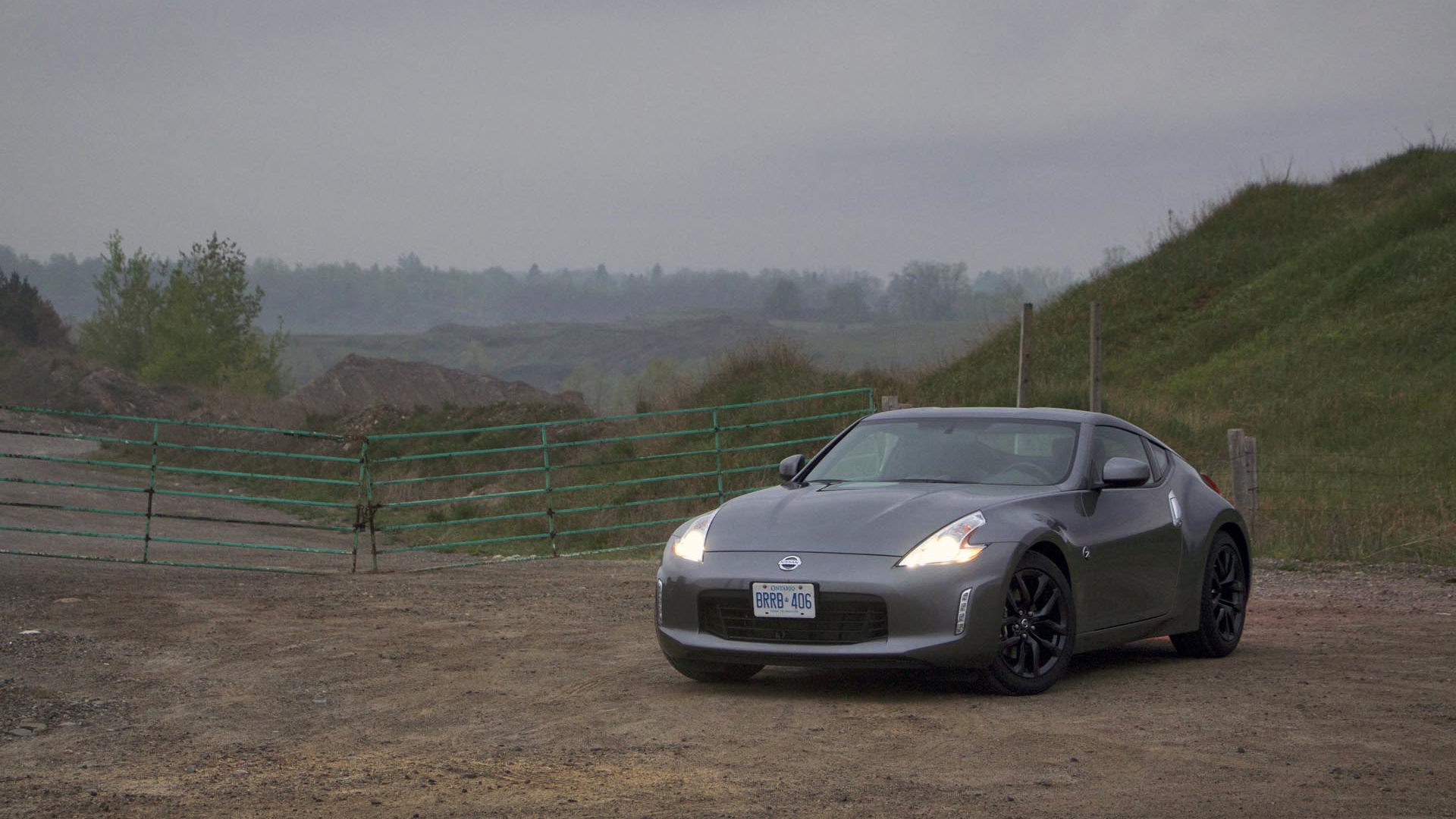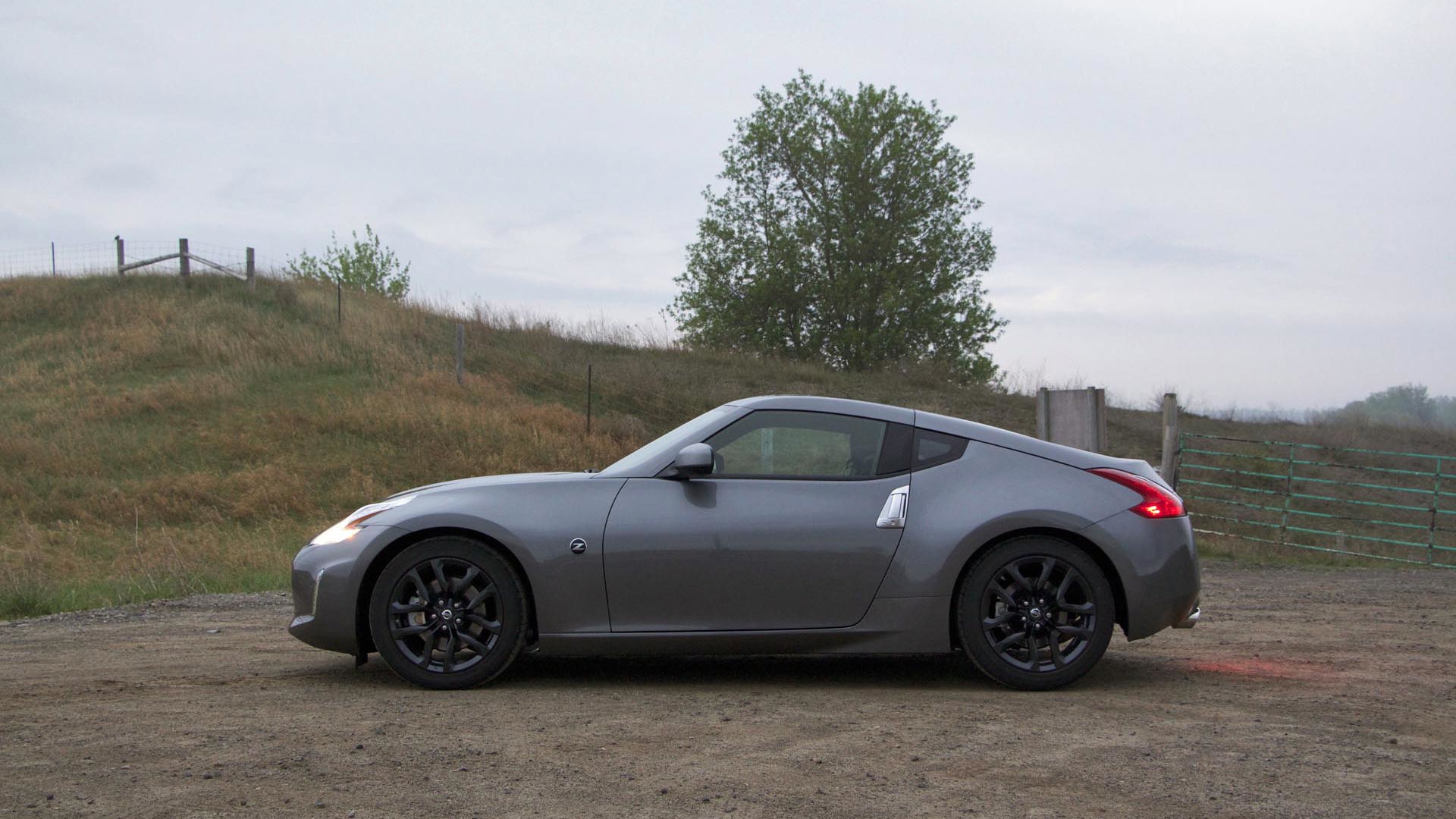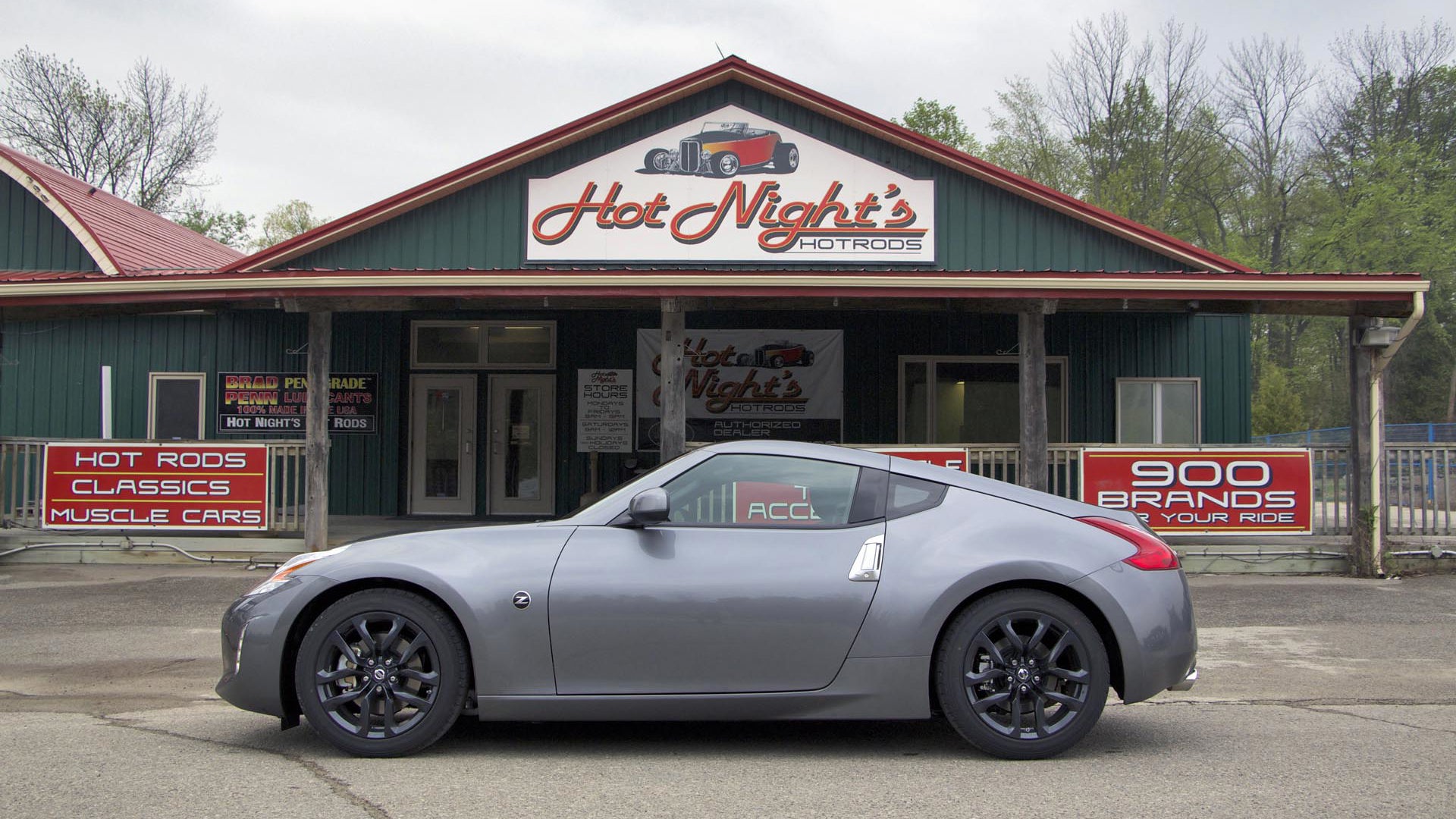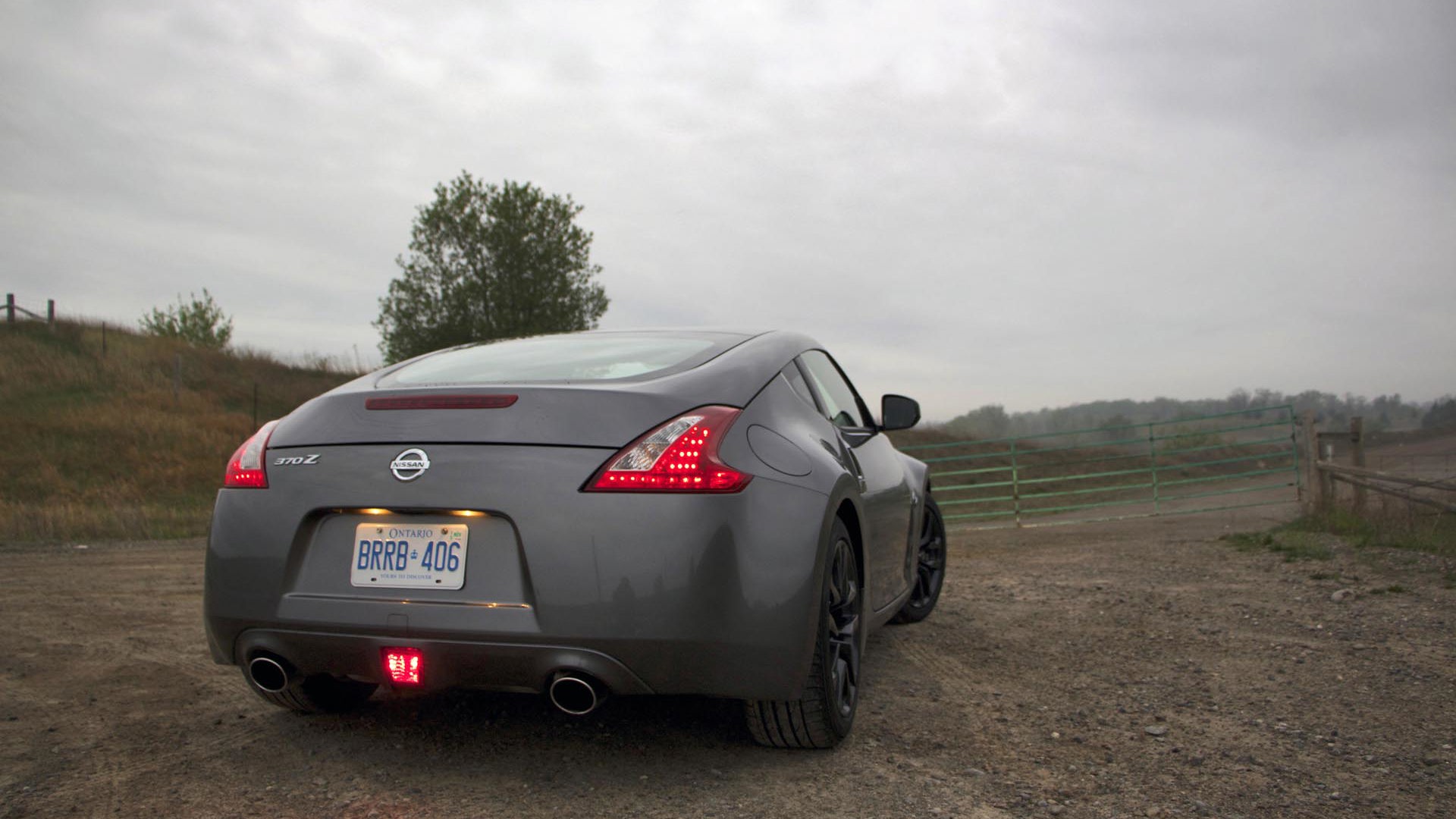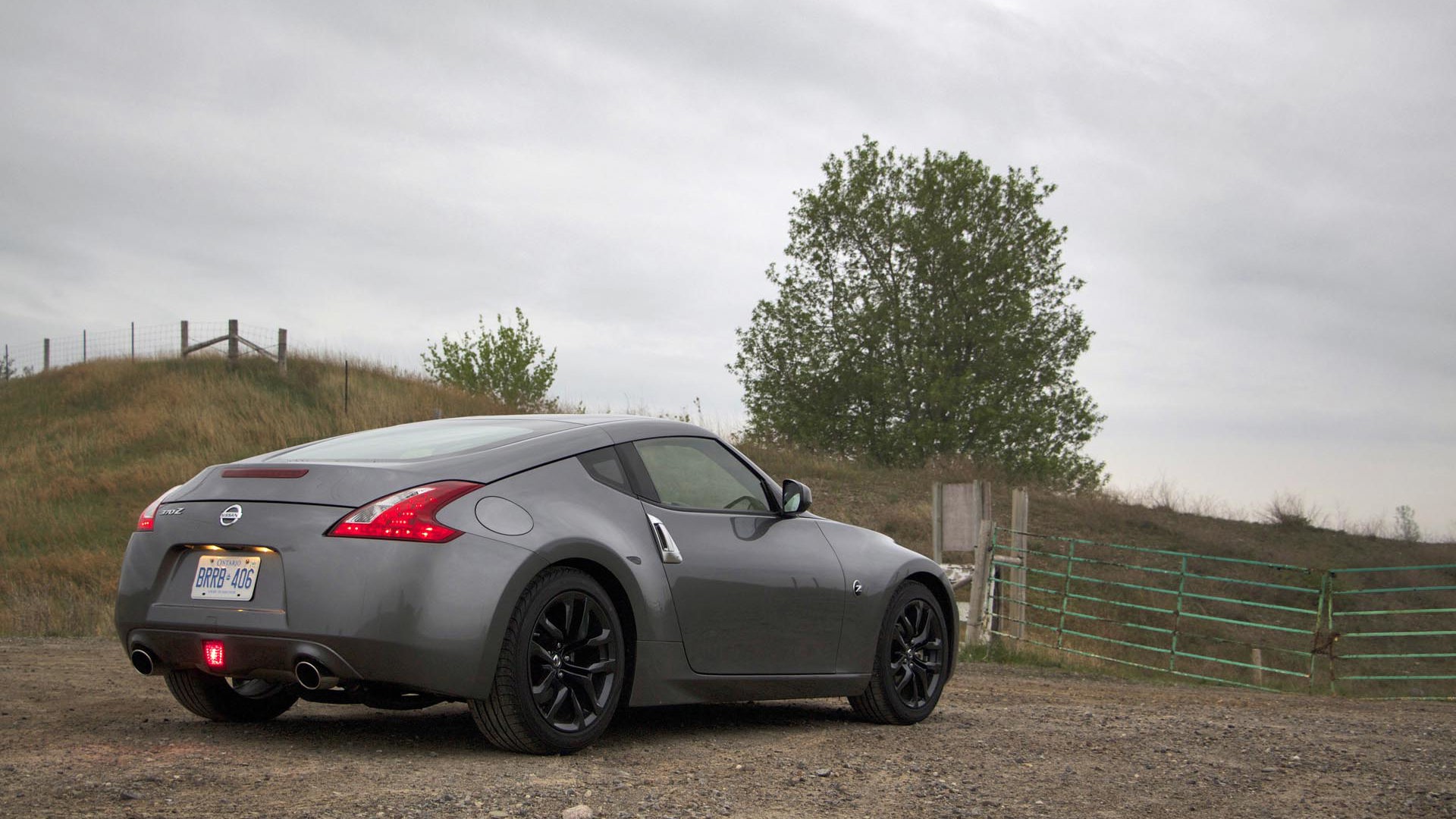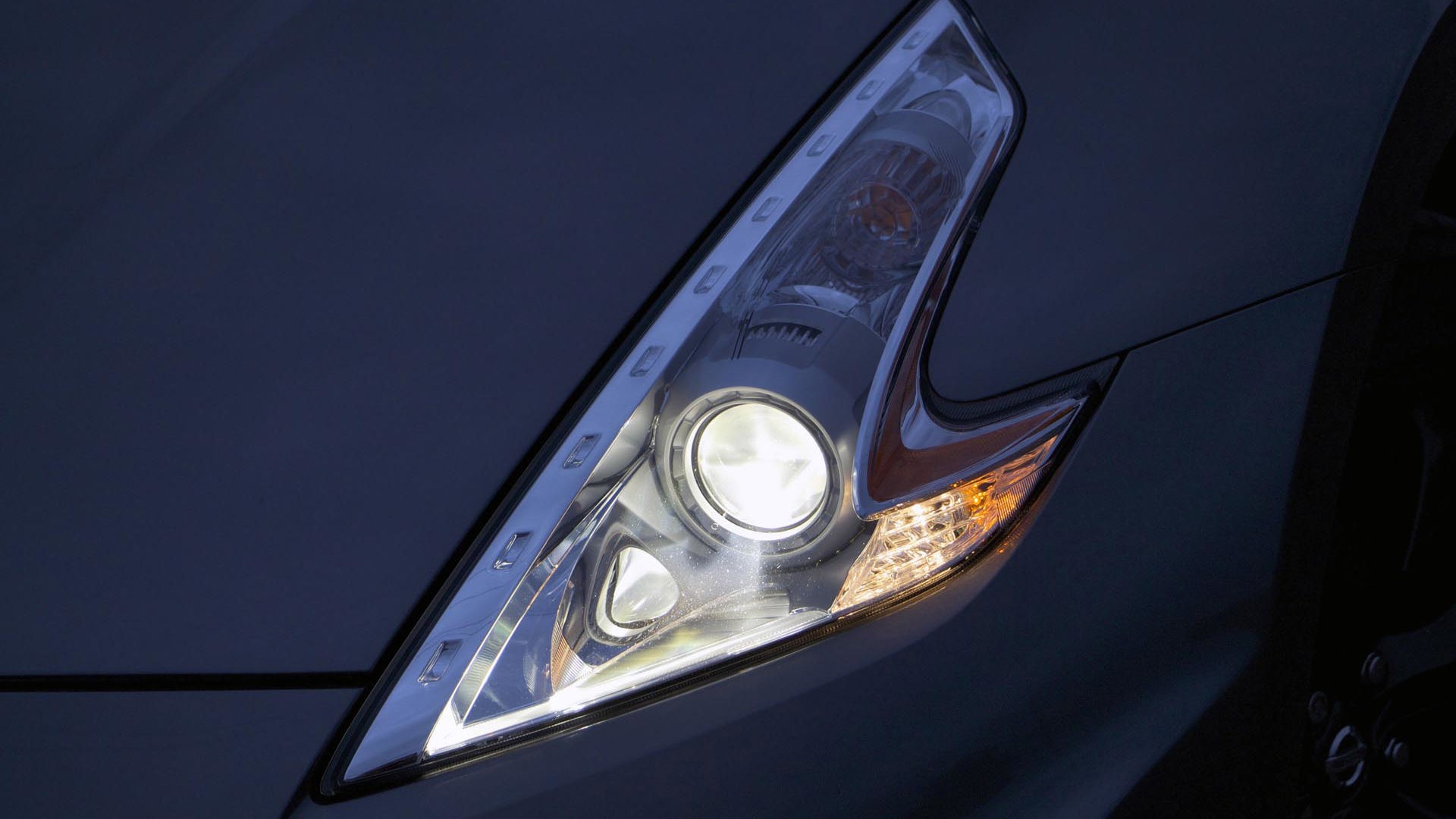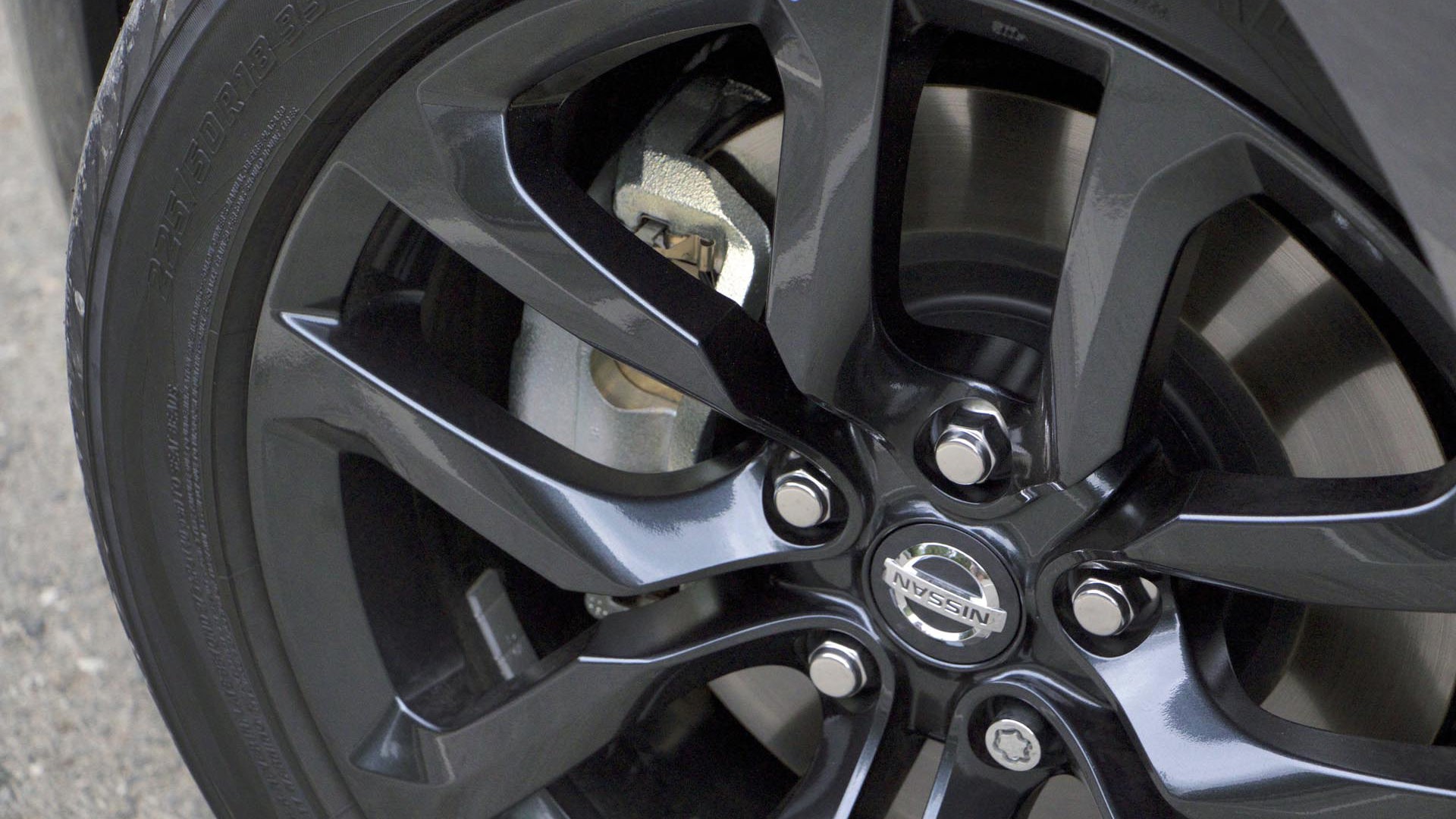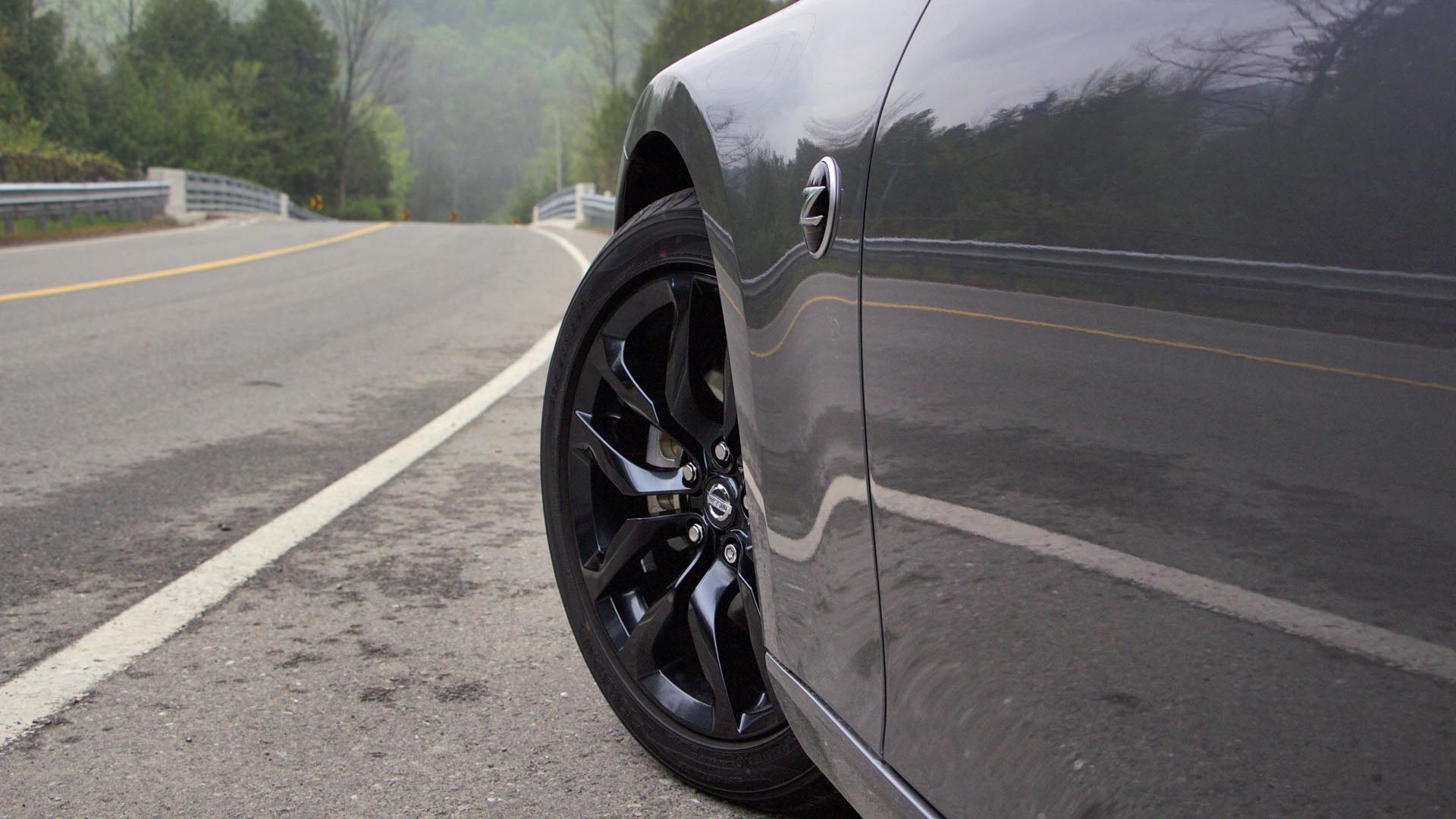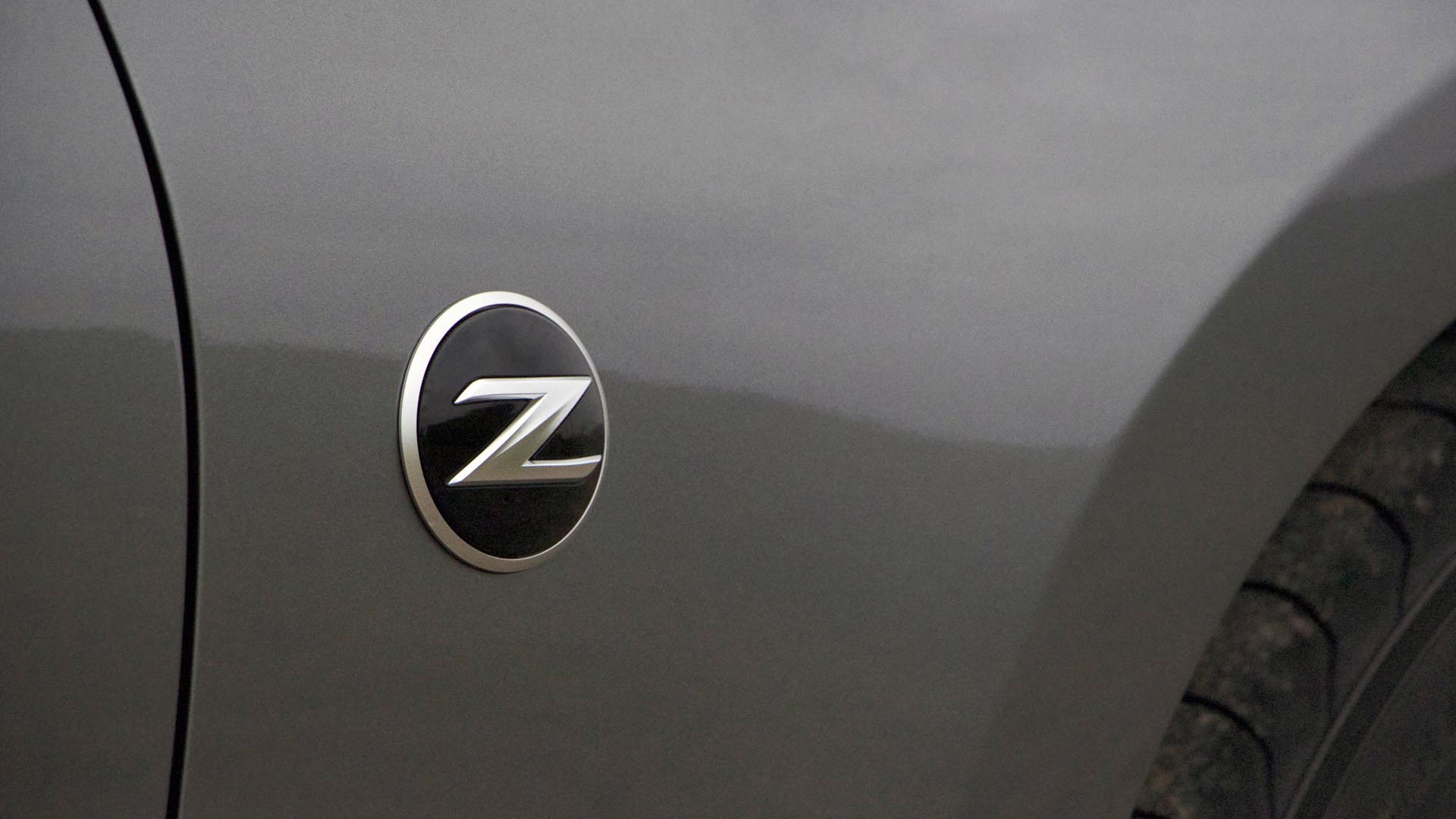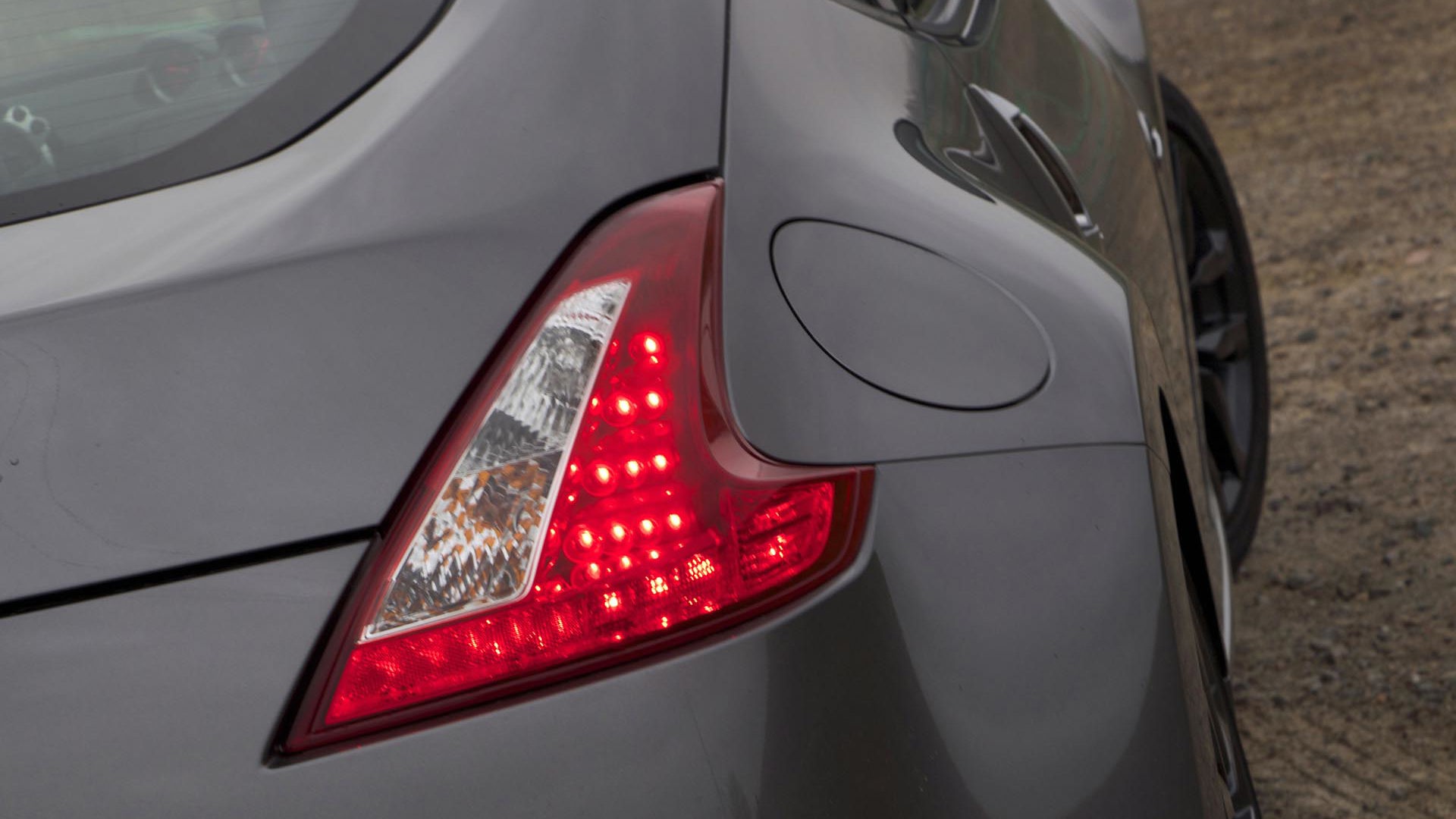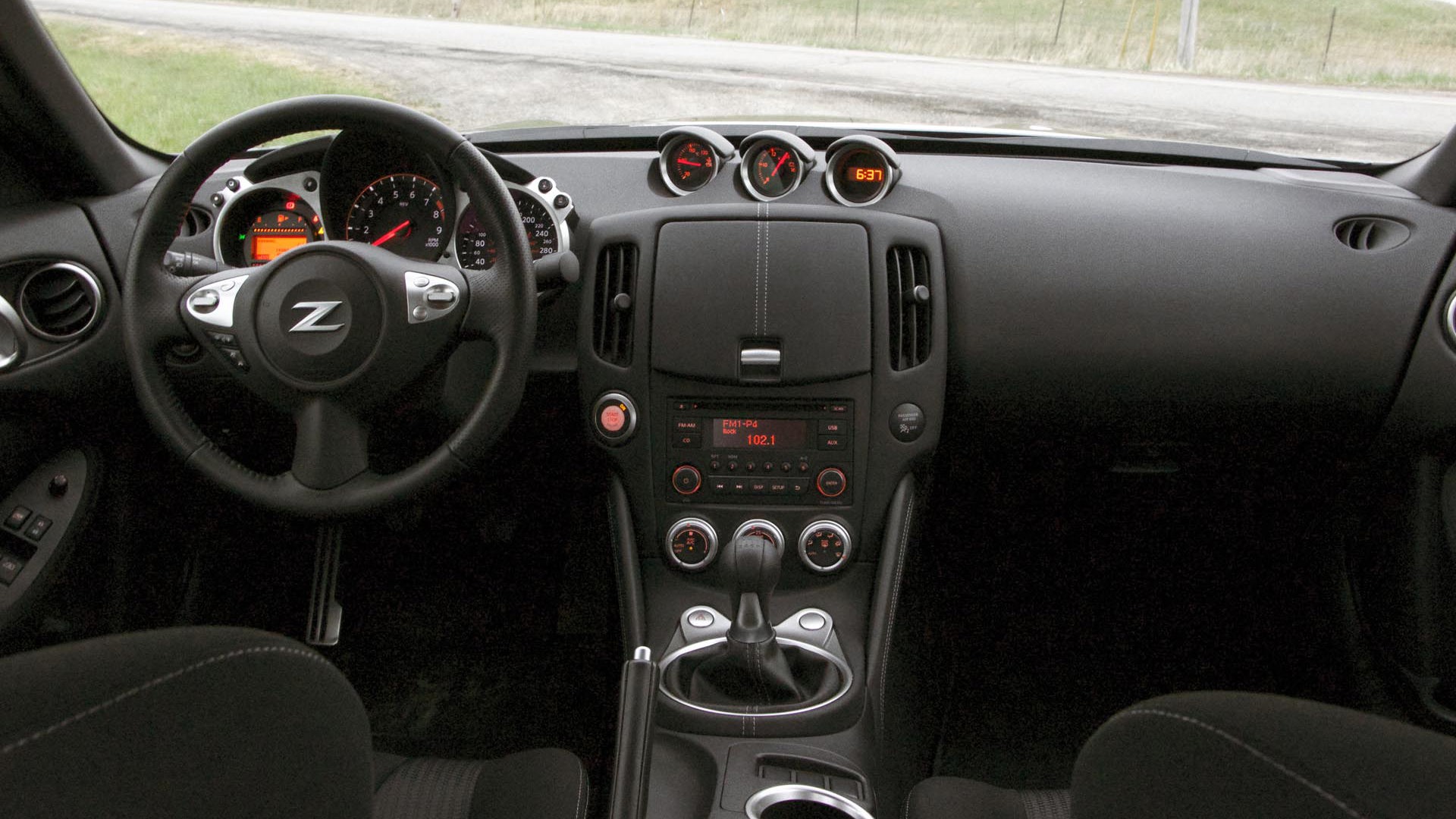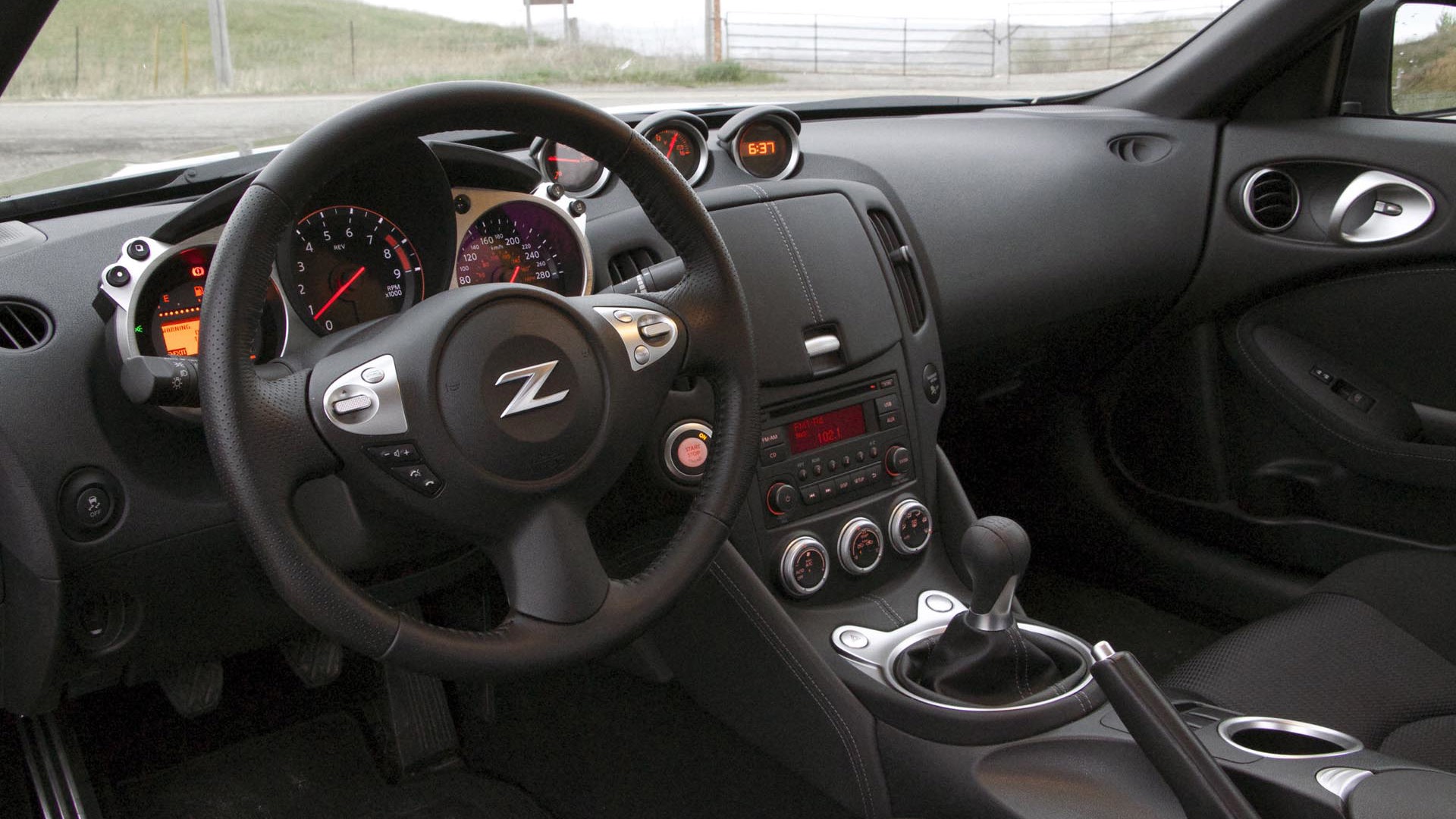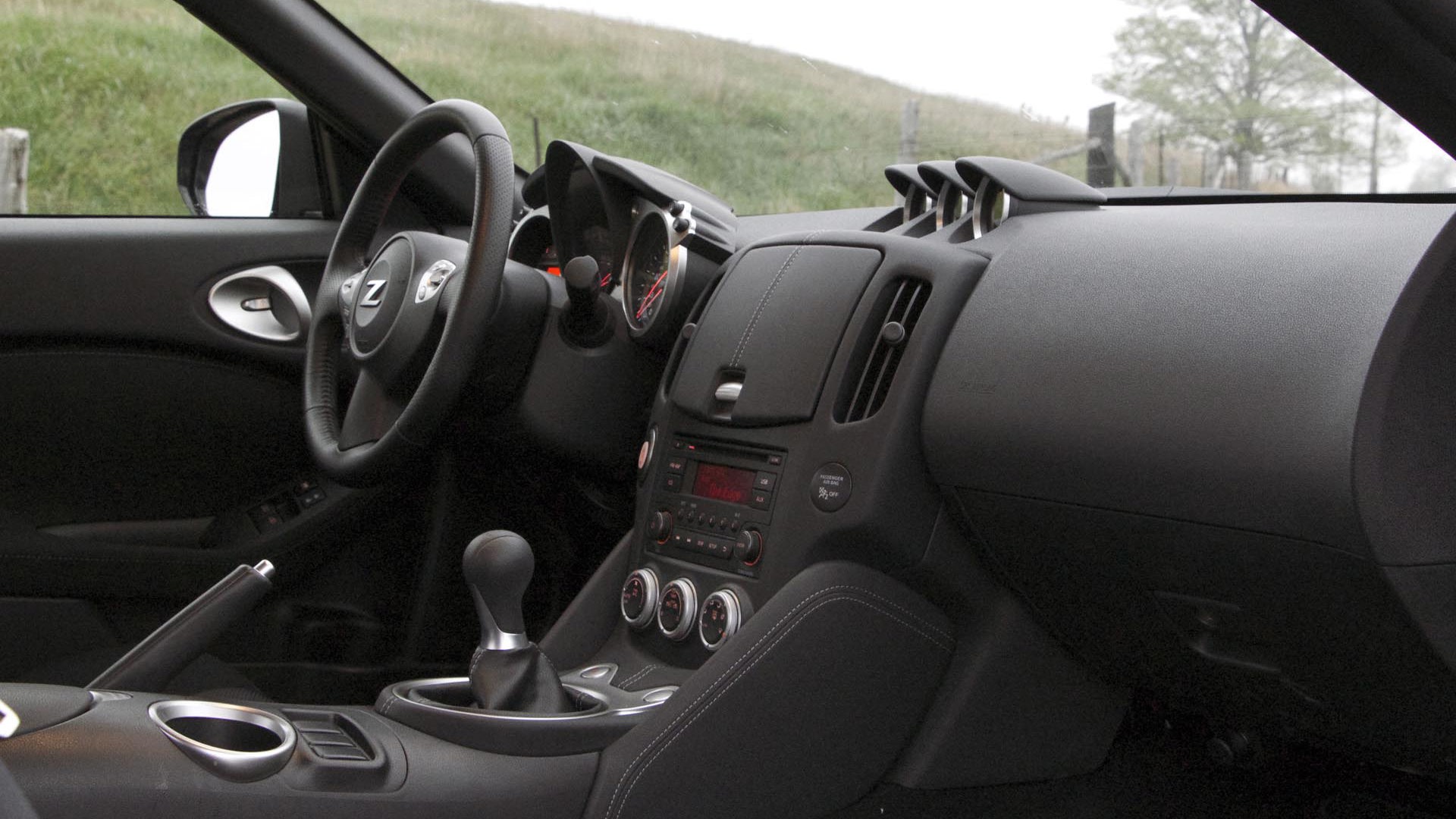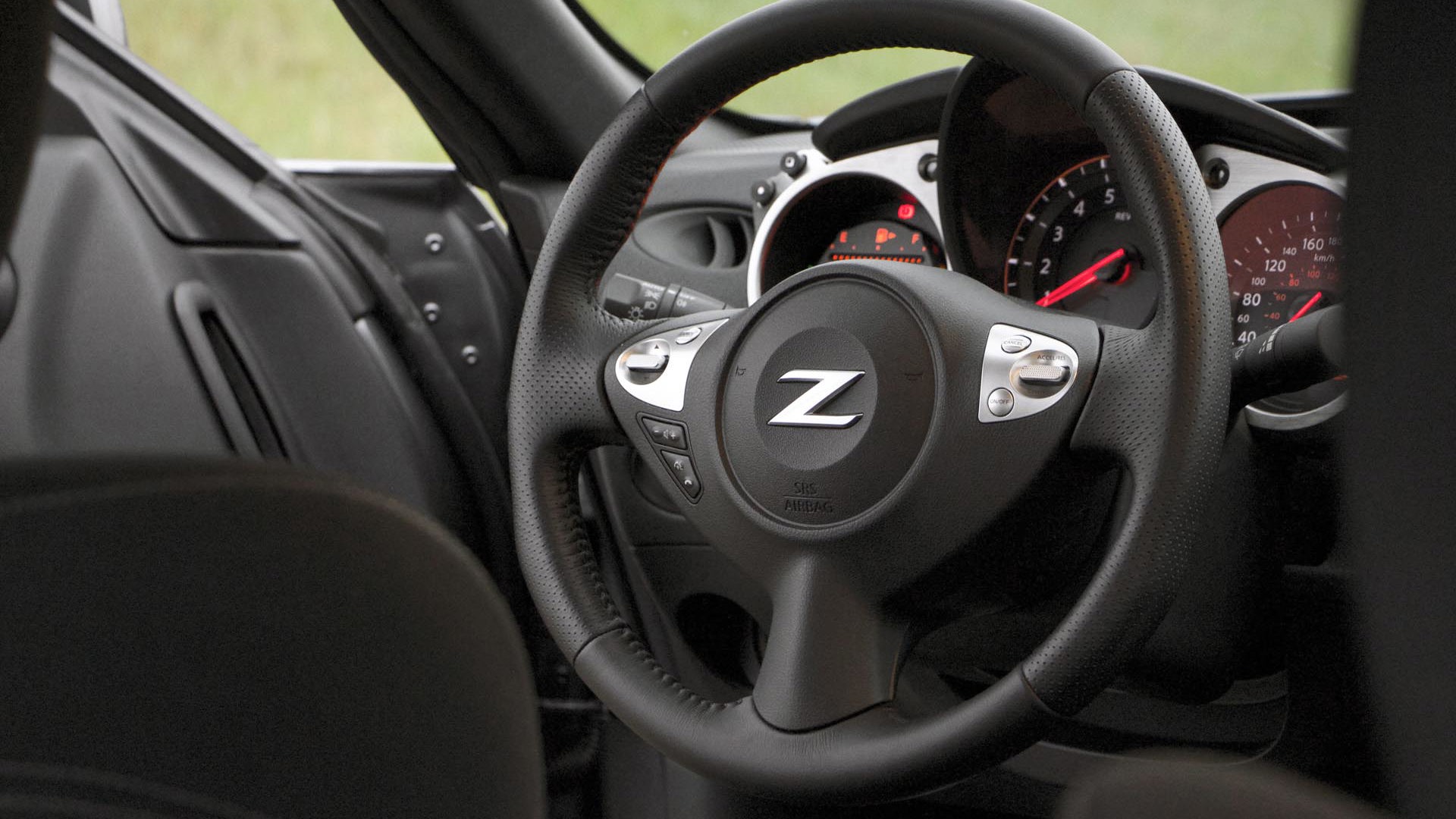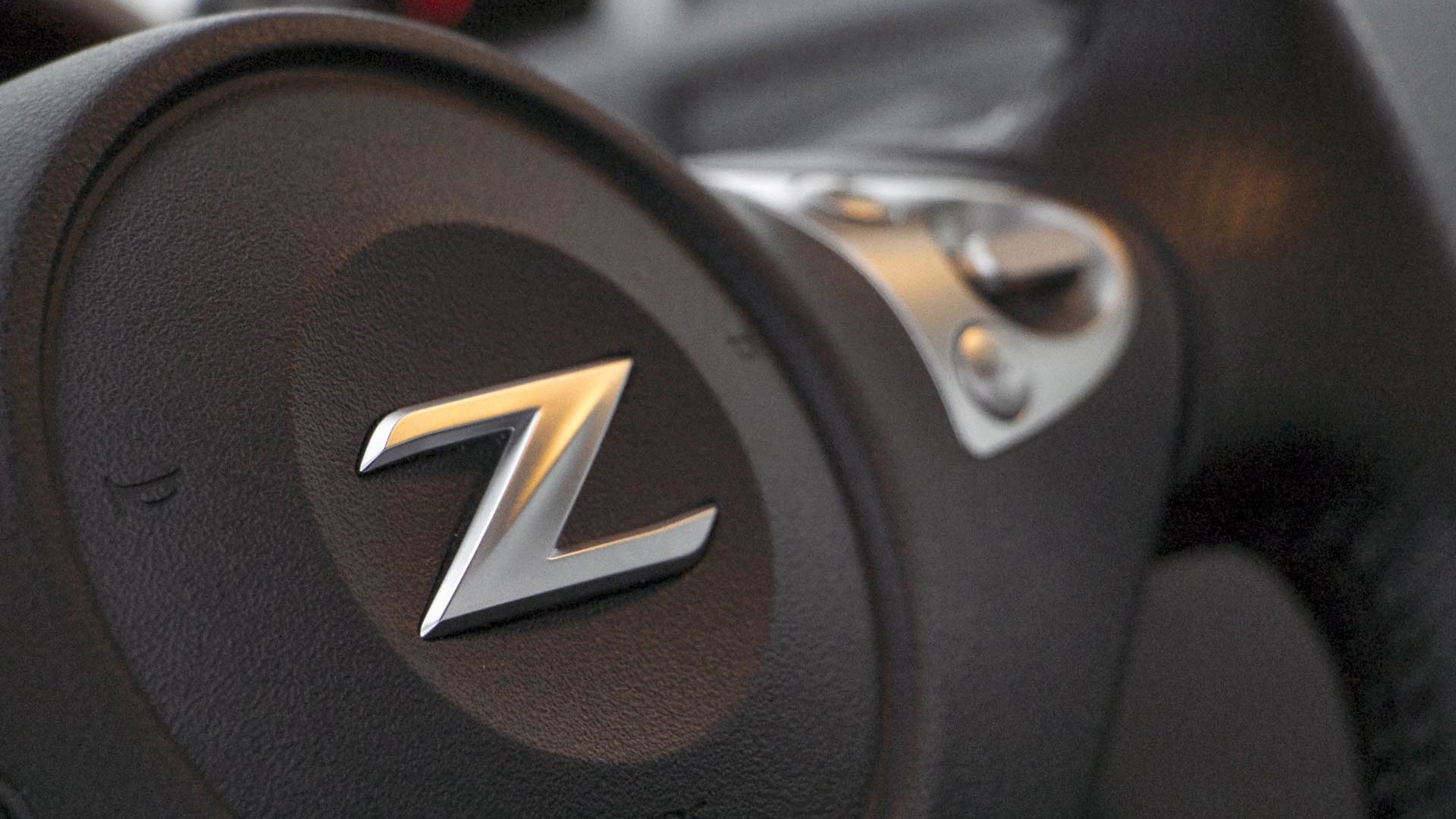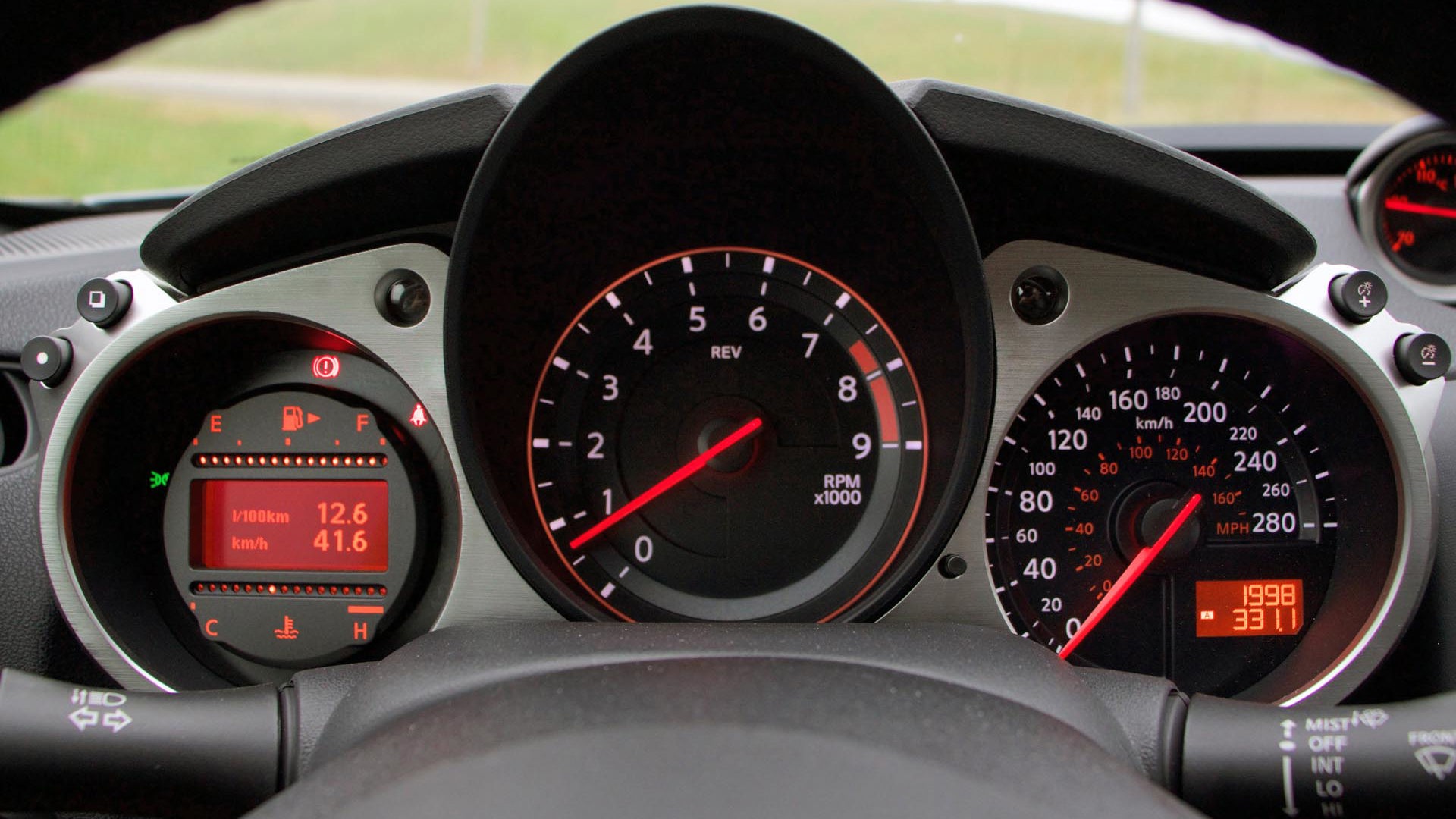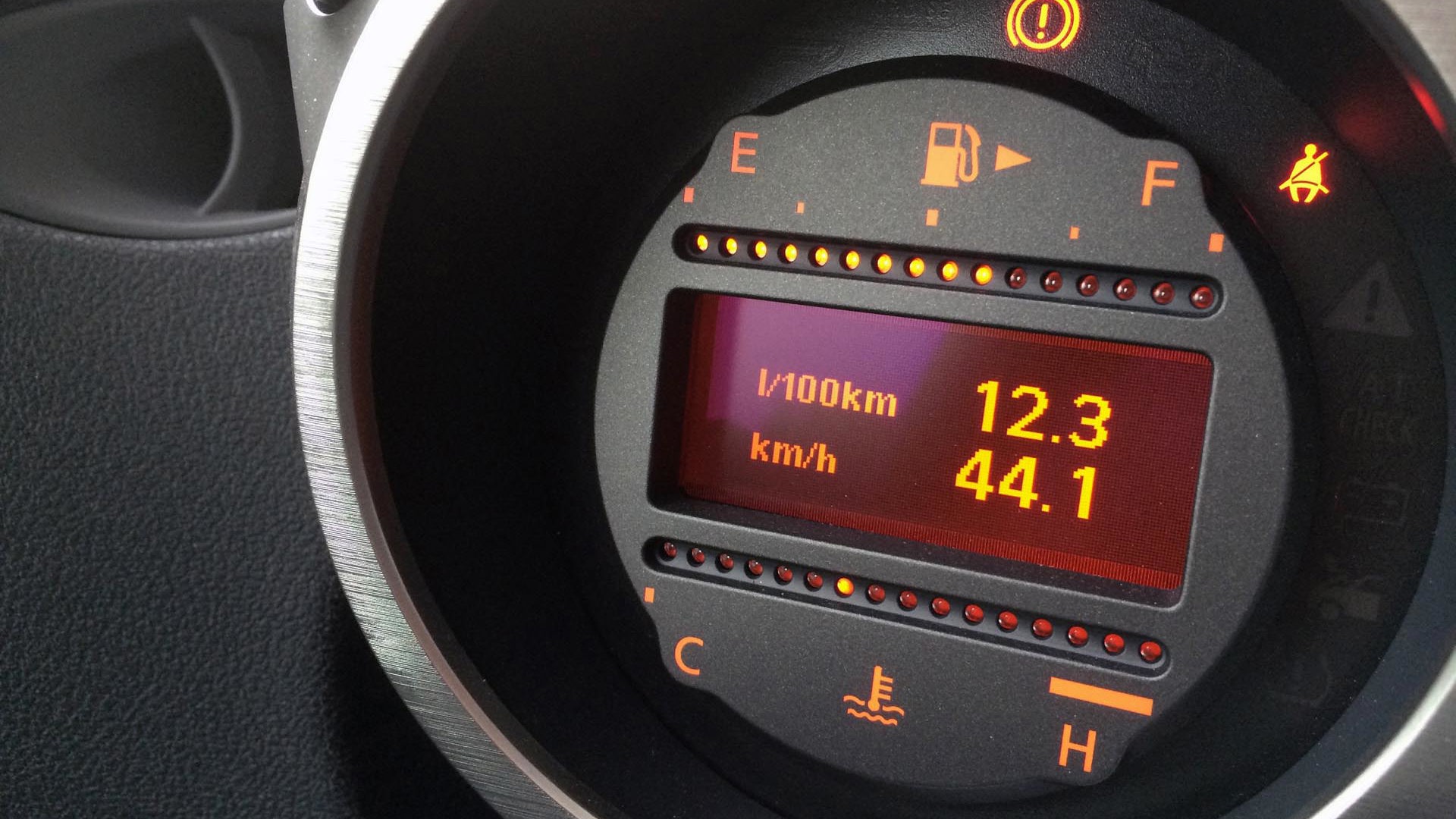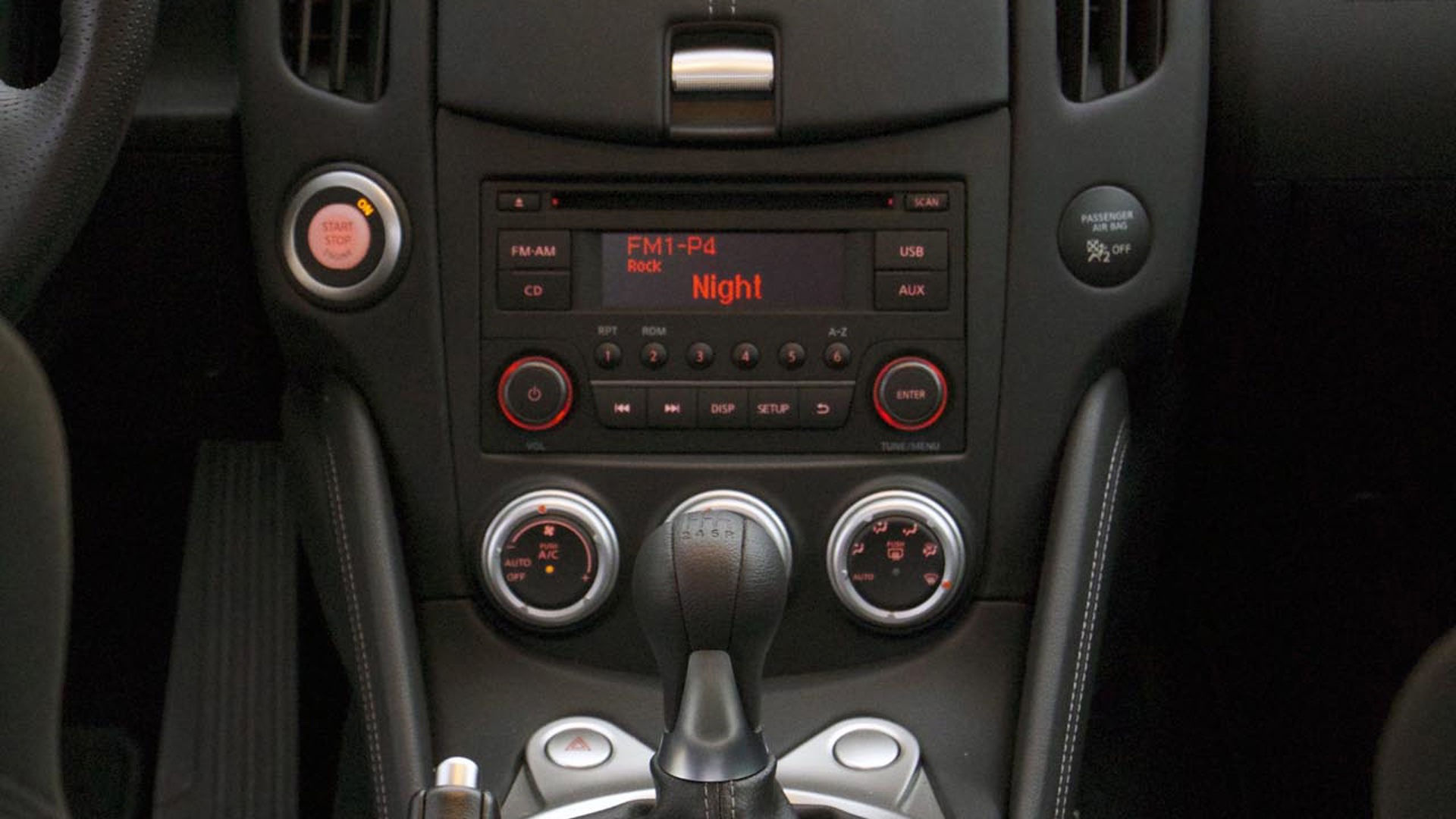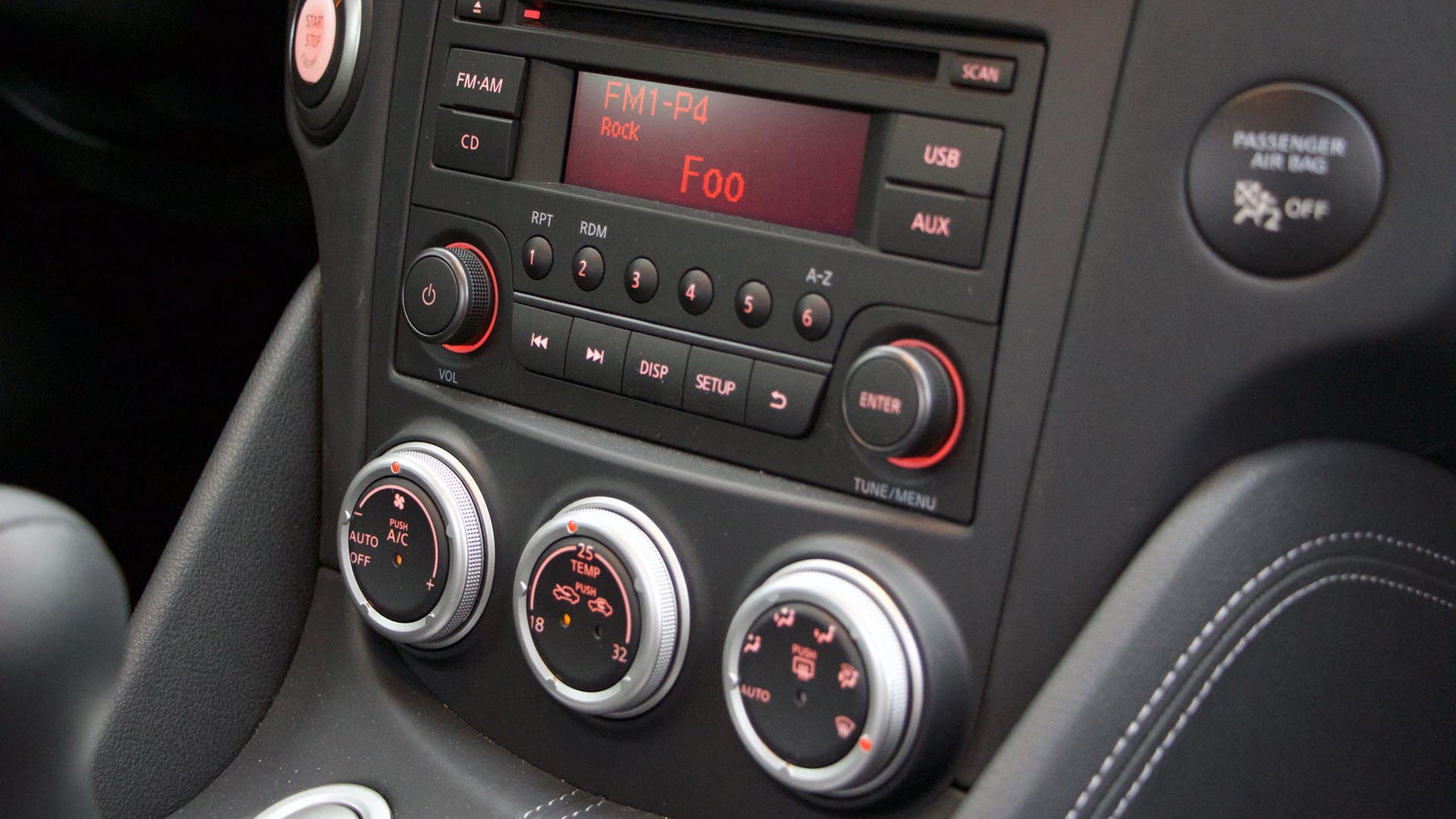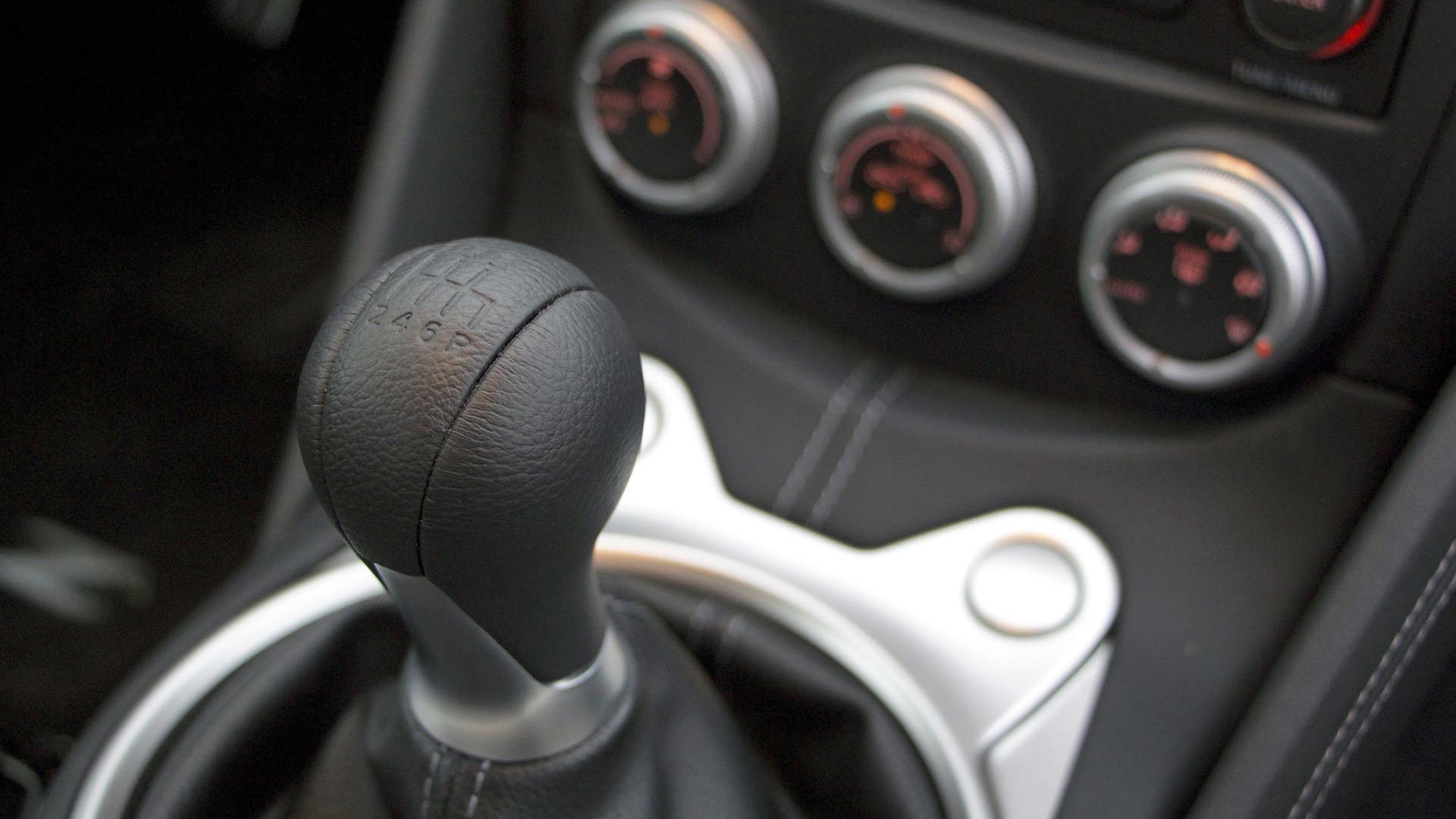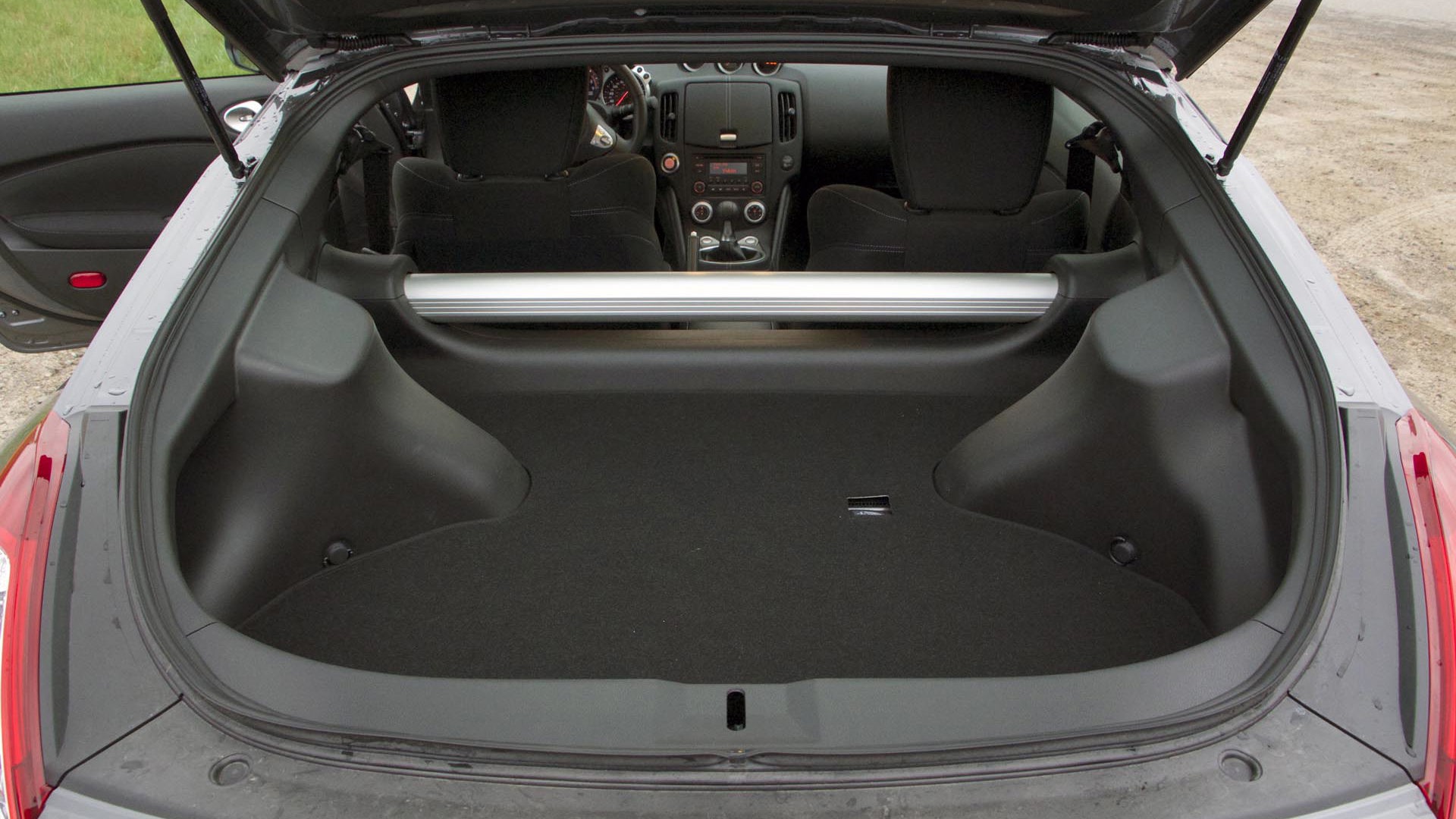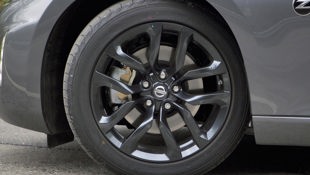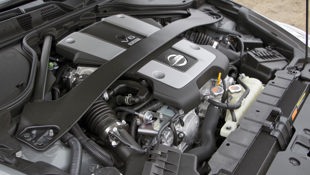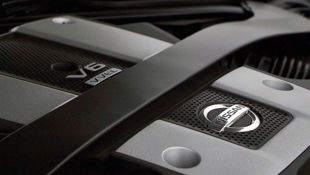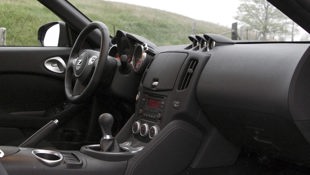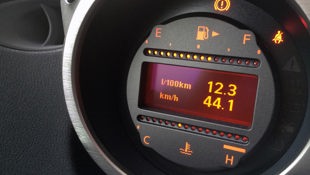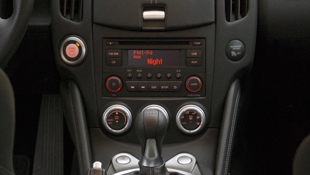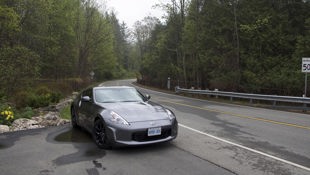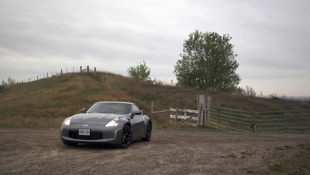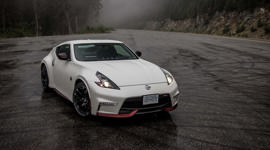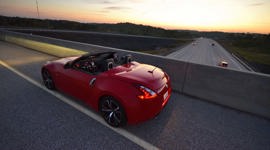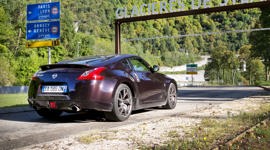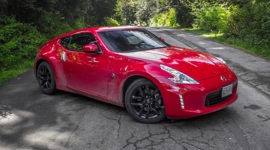 AutoTrader SCORE
AutoTrader SCORE
-
PERFORMANCE8/10
-
EXTERIOR STYLING9/10
-
INTERIOR6/10
-
COMFORT7/10
-
FUEL ECONOMY4/10
It’s rare that a car can make this big a splash so late in its life cycle, but a $10,000 price cut on a $40K car will raise some eyebrows. That is exactly what Nissan did with the 370Z this year, launching a back-to-basics Enthusiast Edition in Coupe form for $29,998, with a $1,740 destination fee. The 370Z has been on the market in its current form since 2009, and has delivered a quintessential sports car experience via rear-wheel drive dynamics, sharp handling and V6 power.
The heart of the 370Z is Nissan’s VQ37VHR 3.7L aluminum V6 with variable valve timing that pumps out 332 hp at 7,000 rpm and 276 lb-ft of torque at 5,200 rpm. It has the power delivery characteristic of so many great naturally aspirated engines, revs climbing steadily, then really coming into its own only once you eclipse 5,000 rpm, where the variable timing kicks in and delivers peak power. That surge can make it feel a little underwhelming at lower revs, so note that you should simply keep this car above 5,000 rpm. Always.
The shame of it is that without the Nismo exhaust, the engine doesn’t quite resonate with me, and I wasn’t alone. While I thought it sounded a bit like a giant dustbuster, my mother-in-law said she felt like she was riding at the back of an airplane. I hope it wasn’t the smell. Once you get into the power band, though, the mechanical fury starts to build and masks some of the low-rpm groaning. You can get a dealer-installed Nismo cat-back exhaust that delivers a more aggressive sound and a slight power gain, but it’s a pricey option at $2,939.
However, this is one opinion, and Justin Pritchard offers a dissenting opinion and the chance to listen to the Z’s engine noises in his video review. Let us know what you think in the comments.
Keeping the engine on a boil shouldn’t be a problem either as the base car comes with a basic manual transmission, the enthusiast’s choice and a solid if unspectacular gearbox. Clutch weight is moderate (I survived a long rush-hour commute without my foot cramping up) without feeling flimsy. The shifter is short with a leather-wrapped knob that offered good grip and the throws were suitably short and gates easy to find, though the gates felt a little cushioned and soft for my tastes. Overall, it’s an easy transmission to use, with good pedal spacing for heel-toe downshifting, and offers a direct, visceral connection to the power source.
Touring trim cars ($39,998) and above add Nissan’s trick rev-matching on manual transmissions, which to me would take away part of the joy of this transmission and mastering the art of the heel-toe downshift. Touring trim also includes a viscous limited slip differential that would help balance out power distribution between the rear wheels. I found little need for it on public roads in the moderate conditions we saw during our test, but it would be welcome for anyone putting it to track use, and in winter months when rain, cold and snow will inevitably lead to some loss of traction, even with the best winter tires.
Throttle response was a bit slow for my tastes (another reason I rarely felt the need for the differential), and I kept looking (hoping) for a Sport mode button that would sharpen that up and put more of that power on tap from early on. Gearing was generally acceptable and nowhere near as frustratingly long as a V6 Mustang we sampled recently, a car whose price and mission the Z has in its sights. As we had those two and others out for a comparison that we will soon publish, I won’t comment on how they stack up, but it highlighted the similarities as much as the differences between these rear-drive sports cars.
As mentioned, getting power down to the ground through the rear wheels posed no problems in our warm, mild week, and the substantial 18-inch wheels with 225/50R18 Yokohama Advan Sport tires. Tires are definitely one area where Nissan didn’t skimp to hit that magical $30K price. They’re plenty sticky, but add to the cabin noise when cruising, so the four-speaker radio was a bit challenged overcoming tire, wind and engine noise.
The combination of sticky tires and 320-mm vented disc brakes made for very good stopping, and it’s only at the $47,998 Nismo model that we see big 356-mm front discs and 350-mm rear brakes with aluminum calipers, four-pistons in front and two in the rear. Front and rear stabilizer bars and front strut tower brace keep the car planted in directional changes, though perhaps not as much as you’d expect for a car this low, but there was a bit of nose dive evident under hard braking and a bit more roll in the corners that the Nismo setup would no doubt alleviate.
Steering was also satisfactory up to a point. It’s weighty enough to feel sporty, and yet is easy enough to manage the car’s small proportions and limited visibility. Even without any back-up cameras and limited visibility, parking was easy, and it was a steady helm on the highway without any excess nervousness or darty behaviour at high speeds. However, it’s not a razor-sharp like a Scion FR-S (as I prefer my sports cars), and although it is quick, there is a bit of give on initial turn-in that then sometimes seems to suddenly catch up and dart into corners a tad more than expected.
While it’s not quite perfect, the steering, engine, transmission, brakes and handling come together to form a whole that is greater than the sum of its parts and my niggling complaints. Its chassis feedback makes up for some of the vagueness in the steering, and the body motions serve to communicate the car’s limits, with strong brakes to provide that ultimate reassurance. It doesn’t overpower, but power is available for the taking on occasions when more punch is called for, and requires the concentration and engagement of clutch, shifter and throttle that is so rewarding for so many driving enthusiasts.
On a more mundane level, Nissan is happy to trot out a list of the features still included on the base model (black-finished 18-inch styled alloy wheels, xenon headlights, automatic climate control, cloth seats, independent double-wishbone front and multi-link rear sport-tuned suspension, Bluetooth phone and USB connectivity), but what have they crossed off the feature list to arrive at that price?
For starters, the seats, and this might be my only significant complaint about the car at this price. They are cheap. Never mind that they are manually adjustable and covered in cloth – I like that, too as it is breathable and grippy – but the padding is so flimsy that when you press your head back into the head restraint, you can feel the rods that anchor the headrest in the seat pressing into one’s back. They are moderately comfortable and somewhat supportive, but a sports car of this calibre, no matter the price, deserves at least decent seats.
While I normally have no issue with manual seat adjustments – in fact, I prefer them to the slowness of power-adjustable seats (at least those that do not have memory positions) – the seat bottom height and angle adjustability are via knobs to raise and lower the front and rear, respectively. It’s awkward and I can never seem to get it right, though perhaps that was because of the flat and shapeless seat itself and not the range of adjustments.
Despite the low cost, the cabin itself did not seem cheap, with decent quality plastics and trim, except maybe the stereo and its economy-class interface. Despite the antiquity, it worked just fine, and I’ve heard plenty worse stereo systems at $30K, and offers Bluetooth and USB connectivity to source tunes from your smartphone in the absence of satellite radio or other entertainment options. In the void left by the screen for the available Nav system, there is a handy covered console storage that can also brace some larger smartphones. The Nav system, with seven-inch screen, SiriusXM Traffic and rearview camera, is part of the $40K Touring trim, which also packs an eight-speaker (two of them subwoofers) Bose audio system with satellite radio, Bluetooth streaming audio, aluminum-trimmed pedals and auto-dimming rearview mirror. And seats: leather-appointed power heated seats with synthetic suede inserts with driver’s adjustable lumbar support.
I won’t taunt you with the features added to the Nismo trim, but there are all sorts of goodies that sound like they make the Z everything it is supposed to be. Okay, I can’t resist mentioning a few, like the 19x10.5-inch Rays forged alloys with Bridgestone Potenza S001 rubber, those upgraded brakes, suspension and exhaust (yes, please!) and Recaro leather seats with alcantara trim. Form what we’ve seen of Nismo-Recaro collaborations in the past (Juke Nismo RS comes to mind), these would likely be superb, and go a long way to easing the pain of that $47,998 price tag. But that is $18,000 more than our humble test subject.
Viewed through the value lens, at $30K, this is a smoking hot bargain, a bit more expensive but a bit less common than a Ford Mustang, and appealing with a different character and tradition. The Z has its own legacy going back decades, and maintains that hunched, ready to pounce proportions it has always had, but the smooth, modern lines, dramatic headlights and taillights and rear roofline that hints at the GT-R is spot on.
The Z is a car that has had my attention for many years and generations, and this generation 370Z preserves its distinct styling with traditional sports car dynamics and experience. The Nismo model no doubt offers a more intense and focused driving experience, while this Enthusiast Edition makes it accessible for a much wider audience, and while not quite as polished or featured as the higher trims, still an elemental sports car that can fulfill in its own right or provide a starting point for more personalized tuning of the appearance or driving qualities.
| Warranty: 3 years/60,000 km; 5 years/100,000 km powertrain; 5 years/unlimited distance corrosion perforation; 3 years/60,000 km roadside assistance Competitors: |
| Model Tested | 2016 Nissan 370Z |
|---|---|
| Base Price | $29,998 |
| A/C Tax | $100 |
| Destination Fee | $1,740 |
| Price as Tested | $31,973 |
|
Optional Equipment
$135 (Gun metallic paint)
|
|

